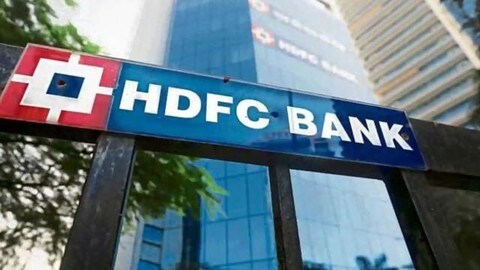In terms of market valuation, the market value of 8 of the 10 largest companies of the country has increased by ₹88,086 crores in this week’s trading. During this period, private sector bank HDFC was the top gainer. The bank’s market cap has increased by ₹44,934 crores to ₹13.99 lakh.
Apart from HDFC, the value of SBI has increased by ₹16,600 crores to ₹6.89 lakh crores. At the same time, the value of TCS has increased by ₹9,063 crores, ICICI Bank by ₹5,140 crores and ITC by ₹5,033 crores. https://www.hdfcbank.com/
Reliance’s value fell by ₹9,136 crores
Last week, Infosys and Reliance’s valuation fell. Reliance’s value fell by ₹9,136 crores to ₹6.52 lakh crores. The market cap of the country’s largest company Reliance rose by ₹1,962 crores to ₹17.25 lakh crores.
This week, the Sensex experienced a sharp rise, gaining a total of 280 points
On the last trading day of the week, Friday, March 28, the Sensex fell, losing around 198 points, finally closing at a level of 77,414. Meanwhile, the Nifty also fell, losing around 72 points and closing at a figure of 23,519. During all this week, the Sensex has managed to gain a total of 280 points. On that Friday, out of the 30 stocks that are a part of the Sensex index, 11 of them have increased in value, while the other 19 stocks have decreased in value. Indusind Bank, as a matter of fact, witnessed the biggest decline, falling by a massive 3.5%. However: Uialert Kotak Mahindra Bank, Hindustan Unilever (HUL), and ICICI BANK all saw a marginal increase of around 1%. If we look at the bigger picture, out of the 50 stocks traded on the National Stock Exchange (NSE), 19 stocks rose while 31 stocks declined in value. If we look at the sectoral indicators, Nifty Media witnessed the biggest decline, declining by 2.29%. Nifty followed with a decrease of 1.76%, and Nifty Realty declined by 1.42%. https://www.hdfcbank.com/personal/ways-to-bank/online-banking/net-banking
What is Market Capitalization?
Market capitalization, or market cap, is the total value of all outstanding shares of a particular company. It includes all shares that are in the current possession of shareholders and the total value of the company in the stock market. To determine this amount, one needs to multiply the outstanding shares issued by the company by the current market value of the shares. Investors and analysts use market cap as a tool to divide the stocks of companies into different segments so that they can make the right investment decisions according to their respective risk tolerance levels. These segments are usually large-cap companies, mid-cap companies, and small-cap companies. In a technical term, the formula for calculating market capitalization can be outlined as: Market Cap = (Number of Shares Outstanding) x (Price of Shares). https://www.hdfcbank.com/personal/resources/ways-to-bank/online-banking/new-net-banking
How Does Market Cap Work? Deciding whether or not a company’s stock will be profitable is a matter of evaluating various important factors for its overall performance. One of those important factors engaged in this process of evaluation is referred to as market capitalization, or market cap for short. Investors are able to measure the size and magnitude of a company through its market cap. In general, a larger market cap is a positive indicator, indicating that the company is better positioned in the marketplace. Furthermore, stock prices vary based on the laws of supply and demand in the market. Therefore, market cap is an indication of the public’s perceived value of that specific company in the economy. https://www.hdfc.com/
What Are the Drivers of an Increase or Decrease in Market Capitalization?
It can be deduced from the equation used to calculate market capitalization that this value is derived by multiplying the total issues of a company’s shares with the current share price. This means that if the share price rises, there will be an increase in market capitalization; if the share price falls, there will be a corresponding decrease in the total market cap.
Read Also:
- Artificial Intelligence In Banking
- Early Examples Of IT Implementation In Banking
- Artificial Intelligence In Banking
- Banking History of Artificial Intelligence (AI) In India
- Implementation Of AI In Banking Sector
- Opportunities Of Artificial Intelligence (AI) In Indian Banking Sector
- Artificial Intelligence In Indian Banking Sector: An Overview
- Impact of Artificial Intelligence (AI) In Banking
- Disadvantages And Challenges Of Artificial Intelligence (AI) In Banking
- Indian Banks Using Artificial Intelligence (AI)
- Role Of Artificial Intelligence (AI) In The Banking Sector
- Evolution Of Indian Banking System
- 11 Features and Characteristics of Banks








Leave a Reply